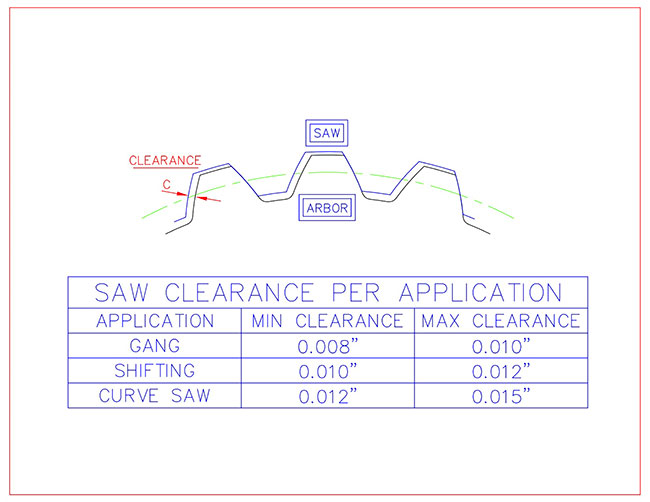
Is your saw fitting correctly on the arbor/sleeve? We, as an industry leader, are always looking for a better way to accurately establish measured standards that will determine when a part, such as an arbor or arbor sleeve, needs replacing.
Basically, a quick visual and touch inspection will pretty much tell the story. If you can see wear and/or feel wear, you should start the planning process of replacement. If you notice any more than .030 deep grooves, then it is time to replace the worn arbor or sleeve with a new one as soon as possible.
Arbors and sleeves will wear differently, but normally a large mill running two shifts should look at replacing them every 11-12 months. If your mill is using sleeves on the arbor, you can shift these sleeves as needed before the saws wear grooves in the sleeves that are too deep for proper guidance. If you allow the wear to become grooves, you will have problems keeping your saws cutting straight, as the guides will hold the saws cutting in one direction while the splines in the saw bore will fall into the grooves. This will cause multiple problems with heat, guide wear and, of course, poor quality lumber production, not to mention wear on your saw splines.
Most arbors can be equipped with sleeves to help with wear problems by keeping the saws shifted to a new location on the sleeve. This is done by moving the sleeve over a little each time wear starts to appear and locking it in place. Many new machines can easily shift the entire bank of saws and guides where this same process will be accomplished.
Checking backlash
Every saw filer may have their own standards for how much backlash a saw to arbor should have. Below is a good standard if you do not have your own established numbers:
- Straight sawing gang: .008 – .010
- Shifting sawing gang: .010 – .012
- Curve sawing gang: .012 – .014
The proper way to check measurement in your saw’s backlash is to have the saw manufacturer provide a test ring. Your saw provider will be happy to supply you with this ring. They can even provide you with different rings, both over- and under-sized, to help determine your needs.
Of course, you can use a new saw, but, for safety and handling reasons, it’s best to use a test ring. Simply slide the test ring on your arbor. While holding the ring back fast against the arbor, insert a feeler gauge or wire gauge between the ring and arbor on the other side of the lobe or spline in the space that has been opened. You should have an assortment of feeler or wire gauges from .006 to .015 to perform this task. The thickness of the gauge that best fits between the lobe and the ring will determine the amount of backlash you have in your saws.
Paul Smith is the owner and CEO of Smith Sawmill Service LLC with locations in Texas and Louisiana. Reach him at paul@smithsawmillservice.com.
Print this page
